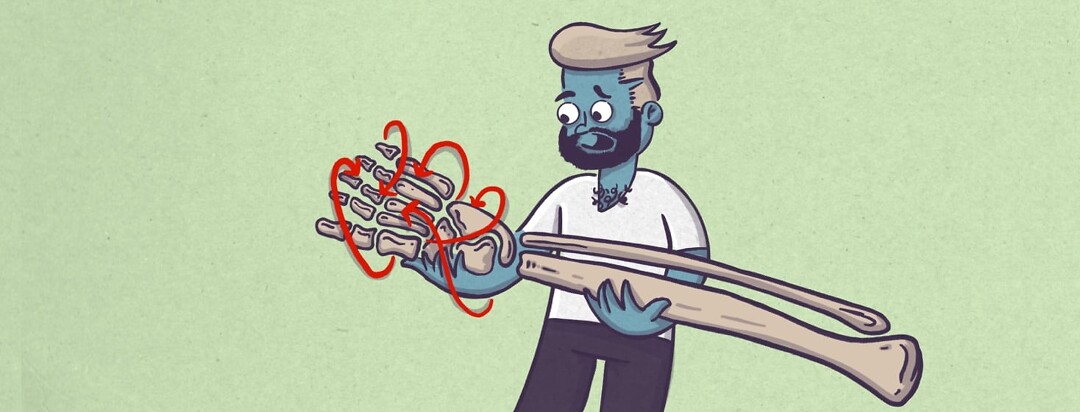A Battlefield of Bones
One evening recently, I noticed my ankle bones. Moments later, I became aware of the tendons attached to them.
Out of curiosity, I Googled (as one does) because I suddenly just had to know just how many bones, etc, we have in our ankles.
How many bones are in the ankle?
Honestly, I thought there must be, like, 50 bones in there. That's what it felt like, anyway.
But it turns out just 3 bones form the ankle joint. Eight tendons hold them all together and provide flexibility, along with a bunch of ligaments. Who knew?
Indeed. Here's the thing: I wouldn't have even noticed all my personal ankle bits if I hadn't been experiencing a painfully nasty RD (rheumatoid disease) flare at the time.
The bones of a story
I always knew, in a sort of abstract way, that I had a skeleton beneath my skin. They taught us about it in grade school, after all. Our skeleton is the body's framework, giving us our upright stance and protecting our delicate vital organs.
But honestly, as a young person, I didn't really notice my skeleton. It was just there. I was a cautious kid who preferred reading or drawing to roughhousing; I never broke a bone while playing.
And I continued to be blithely unaware of my personal skeleton until I was a young adult. That's when RD rudely moved in on my body.
Joint education thanks to RD
Having RD is a heck of a way to learn about anatomy, isn't it? Within a year of my diagnosis, I knew I most definitely had, in this order: knuckles, wrists, foot-and-toe joints, ankles, knees, shoulders, and jaws. I knew because they all hurt.
Of course, I'd always known I had these body parts. The difference was that now I knew them in an entirely different way.
When RD attacked a joint, it became inflamed, usually swelled, and became painful. Sometimes so much so that I could no longer move it without sending the pain level up to "exquisite agony" on the dial.
My doctor told me that these random, vicious attacks on my joints were called "flares." In those early years, they lasted anywhere from several hours to several days.
I was born curious. I loved biology in high school, so it came naturally to me to start digging into this RD thing. It wasn't long before I knew more about bones, joints, tendons, and ligaments than the average bear. Learning about RD took longer, but I got there.
Inflammation of tendons and ligaments
RD actually does a lot of its dirty work in the synovial linings and fluid that cushion the joints. But during the attack, it also causes inflammation in the tendons, ligaments, and even in the muscles that attach to and surround the joint.
Think of a battlefield: there may be one specific enemy under attack, but the violence, mayhem, and destruction of the battle extend out in all directions. There's a lot of collateral damage.
Tactics to fight against RA
Like any good general, I get to know my enemy first and foremost, then what the battlefield looks like. I plan out my tactics and strategy before and during the battle itself.
My offensive weapons are DMARDs (disease-modifying anti-rheumatic drugs). These slow the disease down and make it sluggish. My defenses are NSAIDs (non-steroidal anti-inflammatory drugs) to get the pain-causing inflammation under control and, if necessary, specific pain relievers.
Finally, I use several alternative pain relief techniques like ice, heat, distraction, mindfulness, meditation, and plain old rest.
Today, my left shoulder is under attack. I guess I'd better get to Googling.

Join the conversation